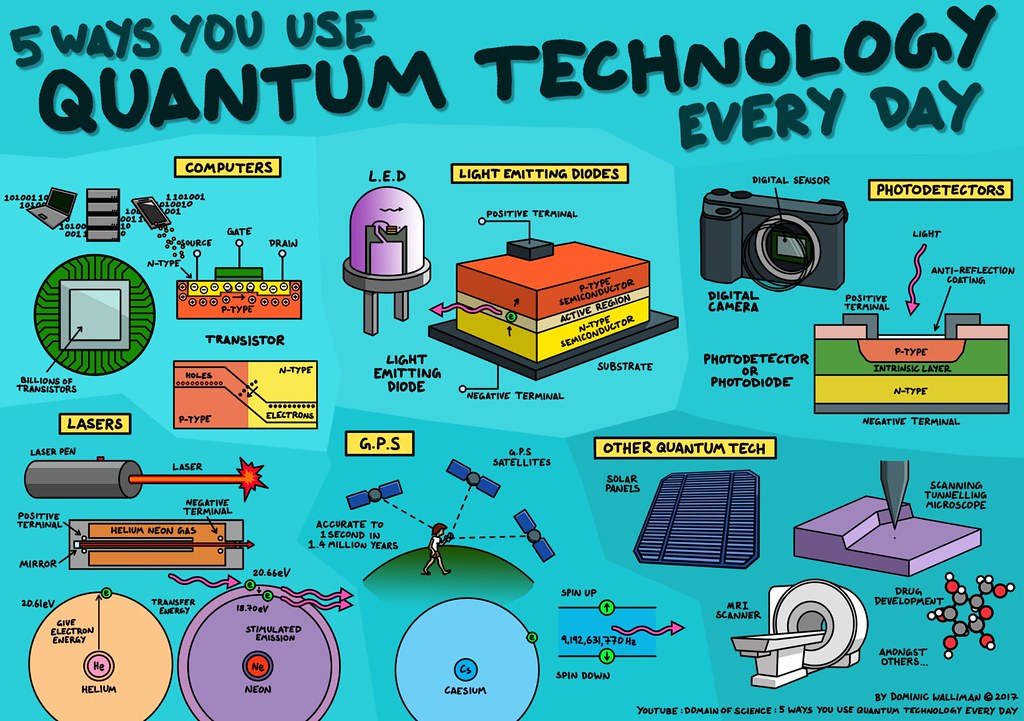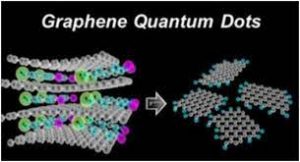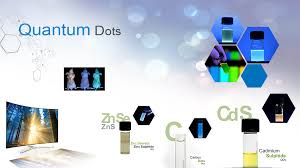What is Graphene Quantum Dot Technology? (GQDs)

Graphene quantum dots (GQDs) are nanoscale structures of graphene that exhibit extraordinary photoluminescence due to their strong quantum properties and edge effects.
Due to their minimal in vivo toxicity and straightforward elimination, graphene quantum dots (GQDs) may be effective for treating intestinal bowel disorders (IBDs).
What is Quantum Dot Technology?

A new kind of LED-backlit LCD called a quantum dot provides accurate color and peak brightness for more engaging gaming. Man-made quantum dots are tiny crystals that can change a spectrum of light into several colors.
A nanoparticle created by humans with semiconductor properties is known as a quantum dot. They are extremely small, with sizes ranging from two to ten nanometers, and the color they emit depends on the wavelength of light they emit.
Recent developments in Graphene quantum dots for applications in bioimaging:
Due to its extremely small size, non-toxicity, biocompatibility, high photostability, tunable fluorescence, water solubility, etc., graphene quantum dots (GQDs), which are a zero-dimensional (0D) nanomaterial of the carbon family, have attracted significant interest in the biomedical area.
Synthesis Strategies of GQDs:
Even if there were several well-known ways to make GQDs, there are primarily two sorts of synthesis strategies: “top-down” and “bottom-up.” To create nanoscale GQDs via the top-down approach, bulk carbon materials like graphene, carbon black, etc. are typically cleaved by chemical or electrochemical exfoliation, hydrothermal or solvothermal treatment, and microwave or ultrasonication.
Abstract- Graphene quantum dots:
Graphene quantum dots (GQDs) are 0D materials with excellent physical-chemical properties that exhibit some of the intriguing qualities of graphene in combination with a configurable bandgap arising from their reduced size.
Additionally, GQDs can be blended with other substances to create nanocomposites with exceptional qualities and excellent performance.
In this article, we provide a contemporary overview of the ways in which the structural traits and physical-chemical properties of GQDs make it possible for them to be used in high-tech composite materials for environmental and agricultural applications.
The special characteristics of GQD nanocomposites make them useful for creating components used in:
- i) filtration membranes and adsorbent substances for the removal of contaminants;
- ii) visual tools and (bio)sensors with various modalities of transduction for spotting dangerous analytes including pesticides, heavy metals, antibiotics, and food toxins;
- iii) and cutting-edge catalytic systems for pollution degradation.
- iv) Finally, current issues and potential developments regarding GQD-based composites’ industrial uses are also covered.
With a focus on their physicochemical, electrical, magnetic, and biological properties, as well as a discussion of recent technological developments in the synthesis of GQDs, recent developments in the development of GQDs as innovative, multifunctional biomaterials are discussed.
In this study, carbon-rich biochar produced by the pyrolysis of biomass waste was treated with a straightforward yet effective microwave process to produce GQDs. The GQDs was created in as little as 30 minutes and have good optical characteristics. When the reaction time or microwave power was increased, a high product yield of about 84% was attained.
Synthesis and characterization of GQDs:
GQDs were effectively created by oxidatively cutting a carbon-rich precursor obtained from biomass with nitric acid (HNO3) during microwave heating for 15–180 minutes. The goods that were produced following each microwave treatment were evaluated by looking at their optical characteristics.
A detailed investigation was conducted to determine the ideal operating parameters at various microwave strengths (100-900 W) and processing times (15–180 min).

Graphene quantum dot uses:
The carbon-based nanoparticles known as graphene quantum dots (GQDs) have exceptional chemical, physical, and biological characteristics that make them ideal for a variety of nanomedicine applications.
Types of quantum dots:
Due to the quantum confinement effect, which splits the energy levels in quantum dots, the semiconductor band gap widens as the size of the nanocrystal decreases.
Graphene quantum dots applications:
Unlike conventional QDs, GQDs have improved surface grafting, are photo-stable, and inherit superior thermal, electrical, and mechanical capabilities from graphene. These features can significantly improve a number of cutting-edge applications, such as:
- Taggants for security/anti-counterfeiting/brand protection applications
- Bioimaging markers
- Fluorescent polymers
- Antibacterial, Antibiofouling, and Disinfection systems.
- Heavy Metals, Humidity, and Pressure sensors
- Batteries
- Flash memory devices
- Photovoltaic devices
- Light-emitting diodes
Applications incorporating GQDs are still being developed due to their restricted availability, and to this end, the synthesis of GQDs from coal appears promising since it enables the manufacture of high-quality material on a wider scale. More high-quality GQDs will be made available to the scientific community in bigger quantities, which will encourage deeper research into the peculiar characteristics and hasten the creation of new applications.
FAQ:

About Quantum dots applications in electronics:
There are many applications for graphene quantum dots, including electronics, optoelectronics, pollution detection, bioimaging, and catalysis.
In image sensors, visible light photodetectors are used to convert incoming light into electronic signals. Quantum dots can also be employed in spectroscopy, fluorescent biomedical imaging, machine vision, industrial inspection, and surveillance.
What are Quantum dots applications ppt?
Quantum dots (QDs) are semiconductor nanocrystals that typically have a diameter between 2 and 10 nm and have a core-shell structure. They don’t have any dimensions. They have distinctive electrical characteristics that fall in between those of discrete molecules and bulk semiconductors.
How do Graphene quantum dots solar cells?
The “multiple exciton generation” (MEG) effect of quantum dots promises to extract more energy from each photon than the solar cells of today, which only produce one exciton for every incoming photon. Quantum dots can also be “tuned” to respond to various light wavelengths by altering their size.
See Also:
graphene quantum dots solar cells: carbon quantum dots ppt, quantum dots synthesis, quantum dots applications, quantum dots applications in electronics, quantum dots applications ppt, quantum dots applications pdf, carbon quantum dots price. carbon quantum dots review, carbon quantum dots structure, quantum dots technology, application of quantum dots in nanotechnology, gqd , quantum dots definition, quantum dots in nanotechnology, quantum dots nanoparticles, quantum dots ppt, types of quantum dots, quantum dots size, quantum dot uses, nanoparticles –





